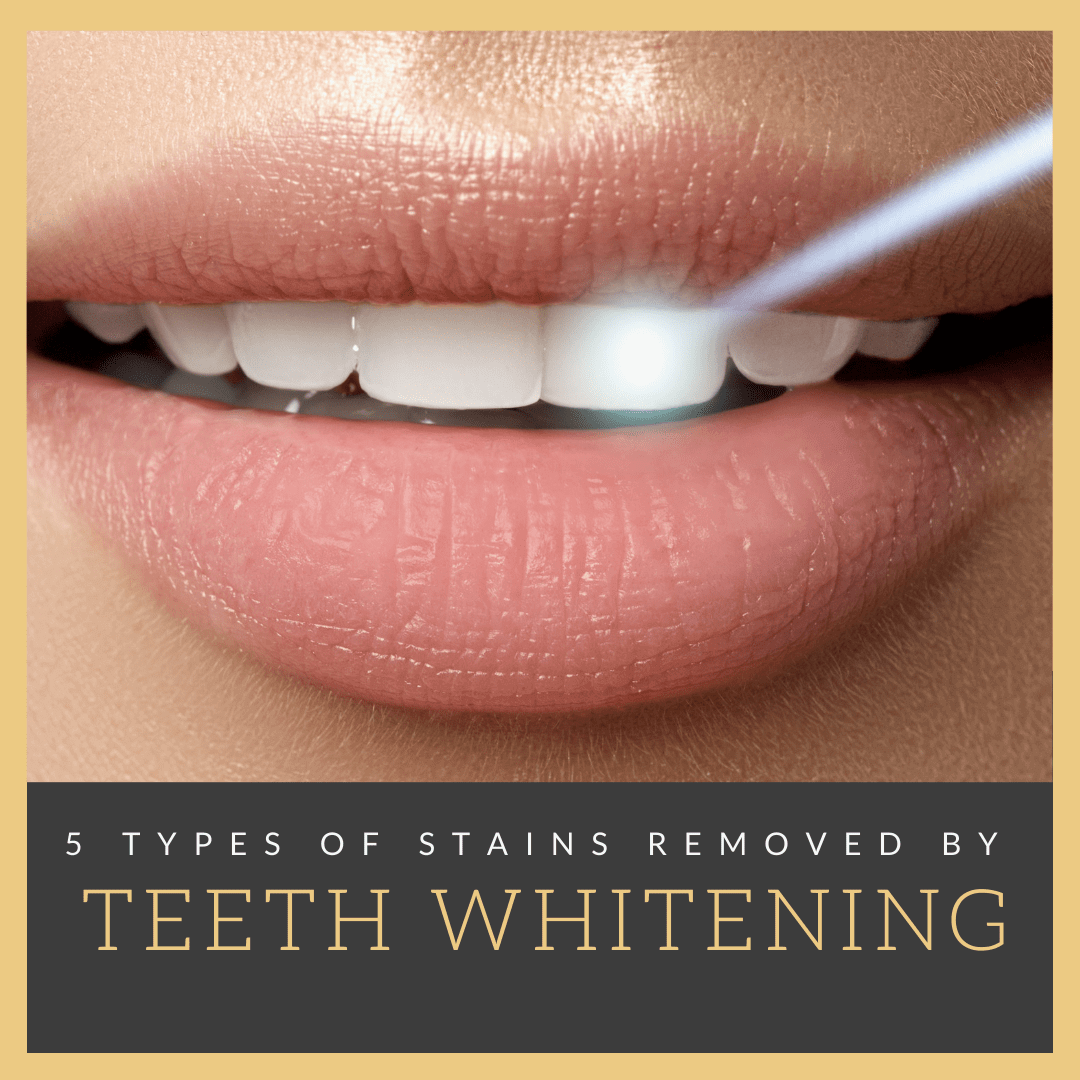If you are looking for an easy, affordable way to enhance your smile, teeth whitening may be the best cosmetic dental procedure for you. Teeth whitening procedures can remove stains from the enamel and dentin layers of the tooth in order to give them a brighter appearance. Stains affecting the enamel are known as extrinsic stains, while stains that affect the dentin layer are intrinsic stains. Teeth whitening removes both extrinsic and intrinsic stains by using a whitening agent that dissolves the colored molecules that cause stains or discolorations. There are five different types of stains that can be removed by teeth whitening, including:

Age Stains
As we age, our enamel layer gets thinner, causing the dentin layer to show through. The dentin layer is a yellow color when compared to the enamel, so it makes our teeth appear to be yellow. Because age stains are the result of dentin discoloration, they are known as intrinsic stains. Luckily, professional whitening agents are able to penetrate the enamel layer to be absorbed by the dentin layer. This means that teeth whitening can improve age-related stains. However, in some cases additional cosmetic treatments may be required to obtain the desired results.


Food and Beverage Stains
Highly pigmented foods and beverages contain what are called chromogens. Chromogens are colored molecules that sit on the tooth enamel, making it appear stained. Depending on the types of foods and beverages you consume, the stains on your teeth can vary in color. Often times, coffee drinkers will have yellow to light brown teeth, while those who eat a lot of tomato sauce or drink wine may have a slight reddish tint. The whitening agents used for teeth whitening will break down these colored bonds, leaving teeth looking brighter and whiter.

Tobacco Stains
Smoking cigarettes is one common cause of enamel stains due to the tar and nicotine. Although nicotine is a colorless substance, it turns yellow when it’s exposed to oxygen. This gives the tooth enamel a yellowish tint. Additionally, tar is dark in color and leaves dark stains on the enamel. Both of these extrinsic stains are able to be removed with teeth whitening agents.


Medication Stains
In some cases, tooth discoloration can occur as a result of taking certain medications such as antihistamines, antipsychotics, high blood pressure medication, and antibiotics like tetracycline and doxycycline. In some cases, teeth whitening can help improve tooth discoloration caused by medications. For more information, see “What Medications Can Cause Tooth Discoloration?”

Trauma Stains
When teeth undergo trauma of any kind, the result is to build up more dentin. As mentioned before, this dentin layer is a yellow color that causes the teeth to have a yellow tint. By lightening up the dentin, teeth whitening can make the teeth appear brighter.
Overall, teeth whitening is an effective and easy way to remove tooth stains from age, foods and beverages, tobacco, medication, and trauma. Whitening agents that work on both the enamel and dentin layer allow teeth whitening procedures to brighten these layers and the overall look of the teeth. If you have these five types of stains and you are looking to improve your smile, see “Teeth Whitening” for more information or ask your cosmetic dentist about teeth whitening.




